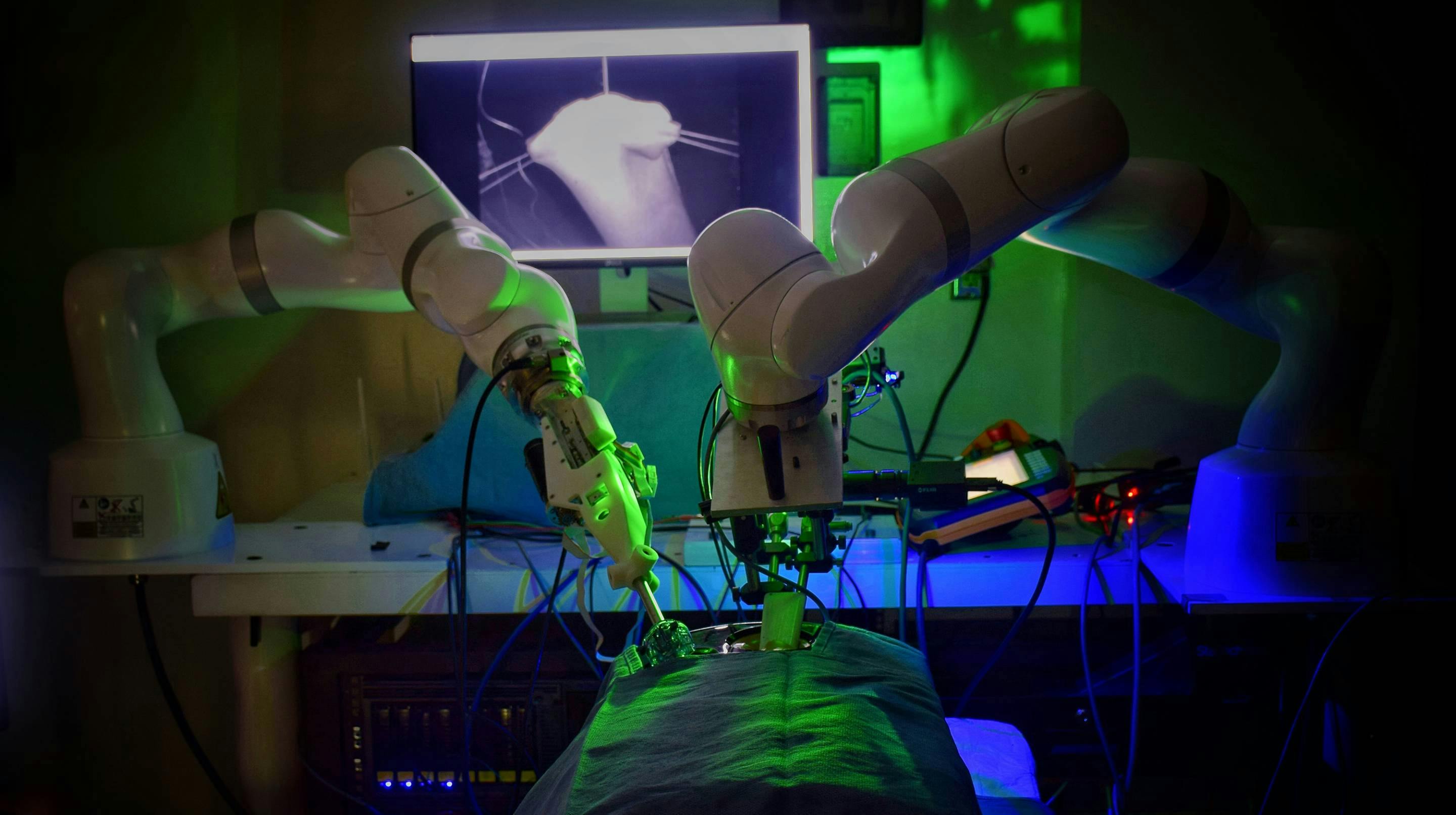Robot performs first laparoscopic surgery without human help
Surgical robotics is an evolving field in which great progress has been made in the last decade. Thanks to science fiction, the future is often clearer to us than the present. That's why we've taken a closer look at a recent development that shows just how important commercially-available robotic surgical devices will be in the near future.

What happened
Last week, researchers at Johns Hopkins University published a news release stating that their Smart Tissue Autonomous Robot (STAR) system performed laparoscopic surgery on pig tissue without human guidance.
During the operation, STAR carried out laparoscopic surgery autonomously to connect two ends of an intestine in four pigs with a "significantly better" result than in humans.
The team equipped the STAR with new features for enhanced autonomy and improved surgical precision, including specialized suturing tools and state-of-the-art imaging systems that provide more accurate visualizations of the surgical field.
Why it is important
Joining two ends of an intestine is a demanding procedure in gastrointestinal surgery. Surgeons must apply the stitches with great accuracy and consistency. Even a slight tremor of the hand or an incorrectly placed suture can lead to a leak, which can result in fatal complications for the patient.
Until now, it has been difficult for robots to perform soft-tissue operations, because soft tissue tends to morph unpredictably. Surgeons must quickly adapt to the new situation to overcome unexpected obstacles. But STAR introduced a novel vision-guided control system that can plan, adjust, and execute in real time, just as a human surgeon would.
This small incremental step in development is by all means a minor breakthrough.
In the future, surgical tasks could be performed with high precision and repeatability, regardless of the surgeon's skills. “This could lead to a democratized surgical approach to patient care with more predictable and consistent patient outcomes,” said Alex Krieger, assistant professor of mechanical engineering at Johns Hopkins' Whiting School of Engineering.
From science fiction to reality
If we take the concept of robo-surgeries further, we would see that hospitals could soon only have to buy in robotic technology to provide the same surgical service anywhere in the world. Just as autonomous cars get smarter with every mile driven, surgical robots could get better and more precise with each operation, freeing doctors from certain types of surgery entirely.
It sounds great when you think about how soon we can implement robotic care all over the world. But it certainly sounds somewhat too good to be true.
It will take a few more years of technological development and training before you can even think about putting people in a med-pod for automated surgical procedures, like the one in Ridley Scott’s Prometheus. And even more important: More serious problems such as access to healthcare outside the rich industrialized countries will certainly not be solved by more technology and automation. What good does it do us to replace expensively trained surgeons with expensive robotic systems?
But as with so many technology-driven visions these days, the hope is that these developments will help ease the systemic burden. A shortage of skilled workers puts a strain on the system, as does insufficient medical technology quality. And yes, even if the concept of robotics began as science fiction, surgical robots promise to play an increasingly important role in the years ahead.
In any case, we are getting closer. Step by step. Innovation for innovation. Currently available surgical robots, which are used in clinical applications as well as in clinical trials—and which are developed by academic researchers, big healthcare corporations, as well as ambitious startups—certainly offer advantages. Especially in minimally-invasive surgery cases such as laparoscopic surgeries.
Slimmer platforms, smaller instruments, and smarter (autonomous) decision-making systems will likely be a reality in the near future. And if they actually do a little bit to democratize surgical approaches, that's not a bad thing at all.